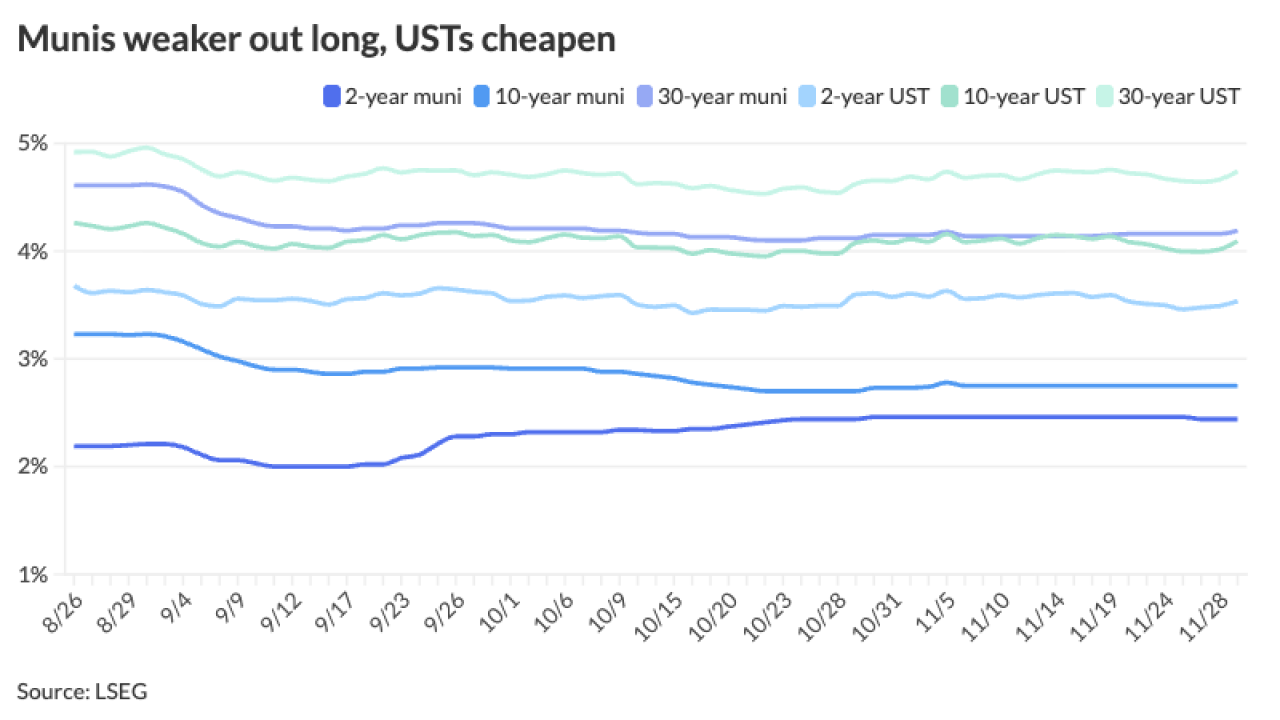Saying it was concerned about Amityville, N.Y.’s ability to repay $1.45 million in notes due in May, Standard & Poor’s dropped the village’s general obligation debt three notches to BBB-minus from A-minus Monday.
As of May 31, 2012, Amityville had $11.64 million in outstanding debt.
“The downgrade is due to the continued deterioration of the village’s financial position and the absence of a meaningful plan to reverse the trend,” said S&P credit analyst Hilary Sutton.
Amityville Mayor Peter Imbert responded to the S&P action saying, “Am I worried about a default? No. We’re going to pay everything we owe.”
On top of the downgrade, S&P has placed Amityville on CreditWatch Negative. “The CreditWatch action reflects concerns about the village’s ability to repay its $850,000 tax anticipation note maturing May 24 and $600,000 bond anticipation note maturing May 29 due to a weak liquidity position and our opinion of potential market access risk,” Sutton said. “While we do not rate these short-term instruments, we believe the weak liquidity position, which could cause this risk of nonpayment, is central to the village’s long-term credit fundamentals.”
Among the factors Sutton pointed to as explaining the downgrade was, first, a substantial draw down of general reserves since fiscal 2008, resulting in a deficit balance of $742,000 at the end of fiscal 2012. This balance is derived from a list of liabilities exceeding a list of assets. The liabilities include the already mentioned tax anticipation note, $407,000 in deferred revenues and $105,000 in accounts receivables.
Combining the government’s general and capital projects accounts, the village has a $810,000 fund deficit. For comparison, the village had total general and capital projects revenue of $16.2 million in fiscal 2012, if one includes $2 million in redeemed bond anticipation notes.
Second, Sutton noted “constrained” general fund liquidity, resulting in the need for cash flow borrowing. Hurricane Sandy exacerbated this.
Third, the village lacks a “meaningful plan” to restore fund reserves.
Finally, the village has “high fixed costs, revenue pressure, and a limited ability to cut personnel costs given already-reduced staffing level,” Sutton wrote.
The village also has to work with New York’s newly passed restriction on raising property taxes. This prohibits levy increases to 2% or the rate of inflation, whichever is lower.
Amityville has the advantage of having strong economic indicators and a willingness to raise property tax revenue, Sutton said.
Regarding S&P’s action, Imbert said, “I’m not happy about it. We’re going through financial struggles like many municipalities across the United States.” The recession and rising pension and health care have hit Amityville, Imbert said. The village has had problems collecting property taxes that are owed to it, he said.
Nevertheless, the village will make all scheduled payments on its debt, Imbert said. The mayor, who has been in office for 16 years, said paying the bonds are the village’s “priority.” The village is willing to raise taxes if necessary, he said.
Moody’s Investors Service rates Amityville’s general obligation bonds at A3 with a stable outlook. Fitch Ratings does not rate the village.
Amityville is in Suffolk County on Long Island. It is about 40 miles east of New York City.





